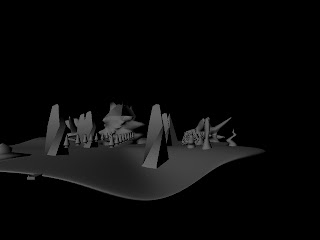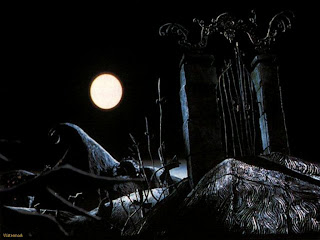For this last reading I chose to talk about Messa di Voce. It caught my eye when we
saw a bit of it in class. The interactivity is two-fold and complex. The first
takes vocalizations from a person and transfers that into a graphic form. Once
the graphic form is displayed, the vocalization used to make that graphic is
saved. This leads to the second bit of the interactivity. The graphics can then
be selected and manipulated to replay the sound that created it. This can lead
to some very interesting performance art.
Messa di Voce uses
software that integrates speech analysis and real-time video camera tracking.
Things recorded are then projected on screens behind the performers. Tracking
allows for the visualization to appear to be coming from the heads of the
performers.
The previously mentioned technology, in the form of the
software that allows for the interactivity, is used almost solely to enhance
the performance and help visualize the possible meanings. As I have stated
before, I believe meaning in art is subjective and based on the reactions of
the observer. An artist can help try and “push” the observer in a direction
using a variety of stimuli.
“Messa di
Voce lies at an intersection of human and
technological performance extremes, melding the unpredictable spontaneity and
extended vocal techniques of two master composer-improvisers with the latest in
computer vision and speech analysis technologies. Utterly wordless, yet
profoundly verbal, Messa di Voce is designed to provoke questions about
the meaning and effects of speech sounds, speech acts, and the immersive
environment of language.”
Above
is the purpose of Messa di Voce. I
feel it is hard to describe the artist’s voice in this which is ironic since
the piece is all about placing voice and making it visible for all the world to
see. Especially within this piece, the voice can belong to a couple different
groups. While Golan Levin and Zach Lieberman helped to make the software and
allowed for a certain number of possibilities based on what they wanted to
happen, Jaap Blonk, Joan La Barbara and any other vocalist that may perform
have their own vision and voice for a performance.














































